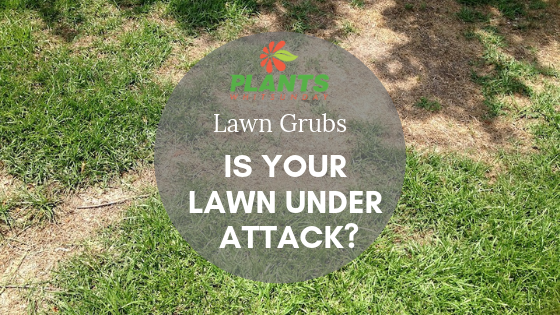Lawn grubs make your lawn have irregular brown shaped patches through it. With several pests falling under the name of ‘lawn grubs’ they all share a commonality in that they wreak havoc on lawns, either as a surface dwelling or root feeding larvae. A seasonal issue, infestations are most prevalent in the warmer months.
Lawn Grubs
The root feeding larvae are often referred to as white curl grubs; they are mostly the larvae of beetles and look quite similar to the witchetty grub. Living under the surface of the soil, lawn grubs feed on the roots of the grass. This results in structural damage to your beautiful lawn leaving brown patches of dead grass. They can also create ‘spongy’ patches in the lawn where you can at times roll it back like a carpet due to the anchoring roots being chewed away. The surface dwelling larvae are from moths and are caterpillar-like grubs that feed on the lawn and creating damage in the form of brown patches.
Apart from spongy and brown patches, other tell-tale signs are increased bird activity in the morning and evenings. These birds feeds on the lawn grubs that come out at night time. The presence of small moths above the lawn are another sign of the grubs being present.
The life-cycle of these pests is relatively short, with lain eggs hatching within 2-5 days. The larvae feed on the grass for 18-24 days before becoming pupae and transforming into adult moths where the cycle begins again. Due to this it is important to treat them as soon as possible.
Some lawns hold up better than others. With Fescue, Kikuya and Couch grass being more susceptible and buffalo grass less so. Plants Whitsunday stock a range of Lawn Grub Killer in liquid and granula form. Please do not hesitate to pop in or call on 4946 1258


Recent Comments